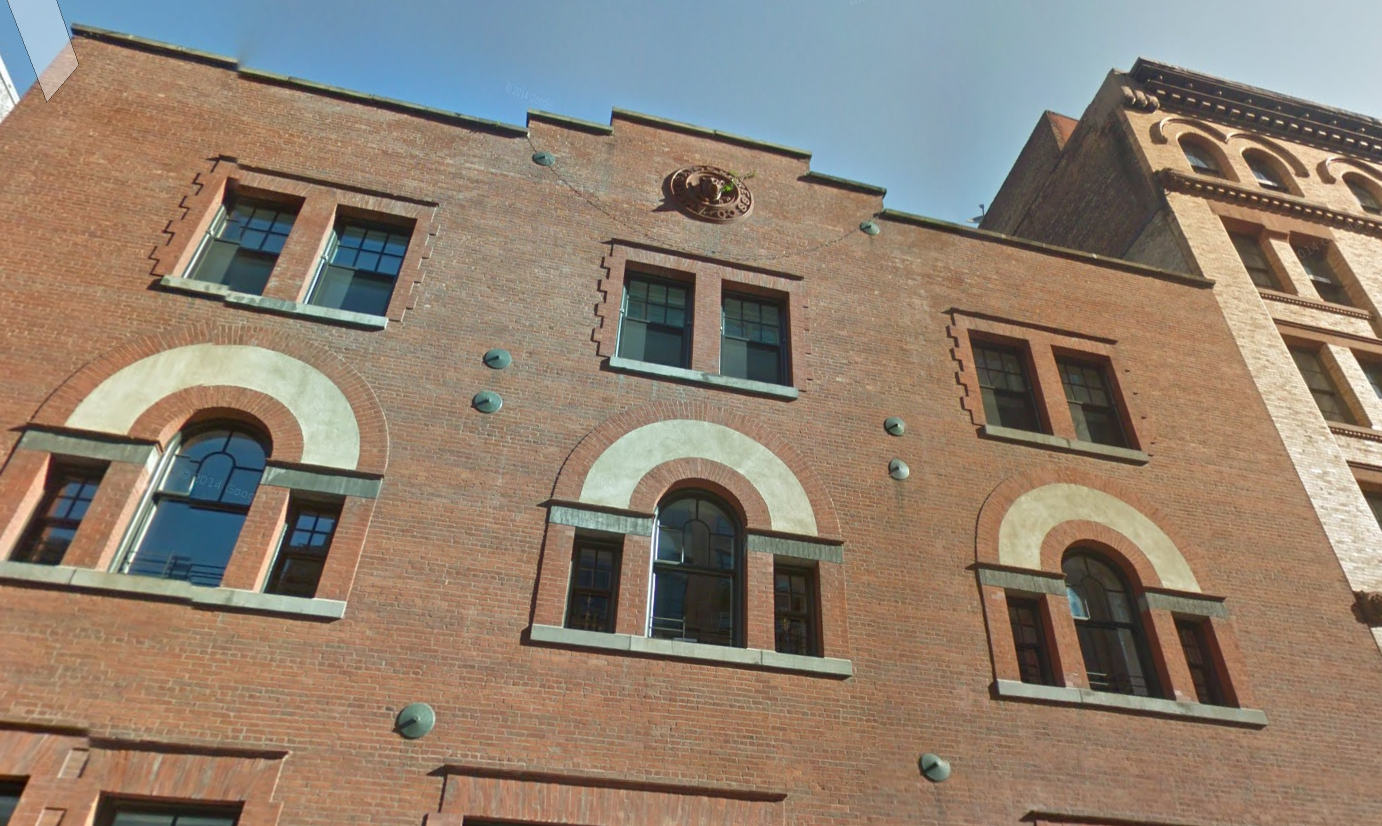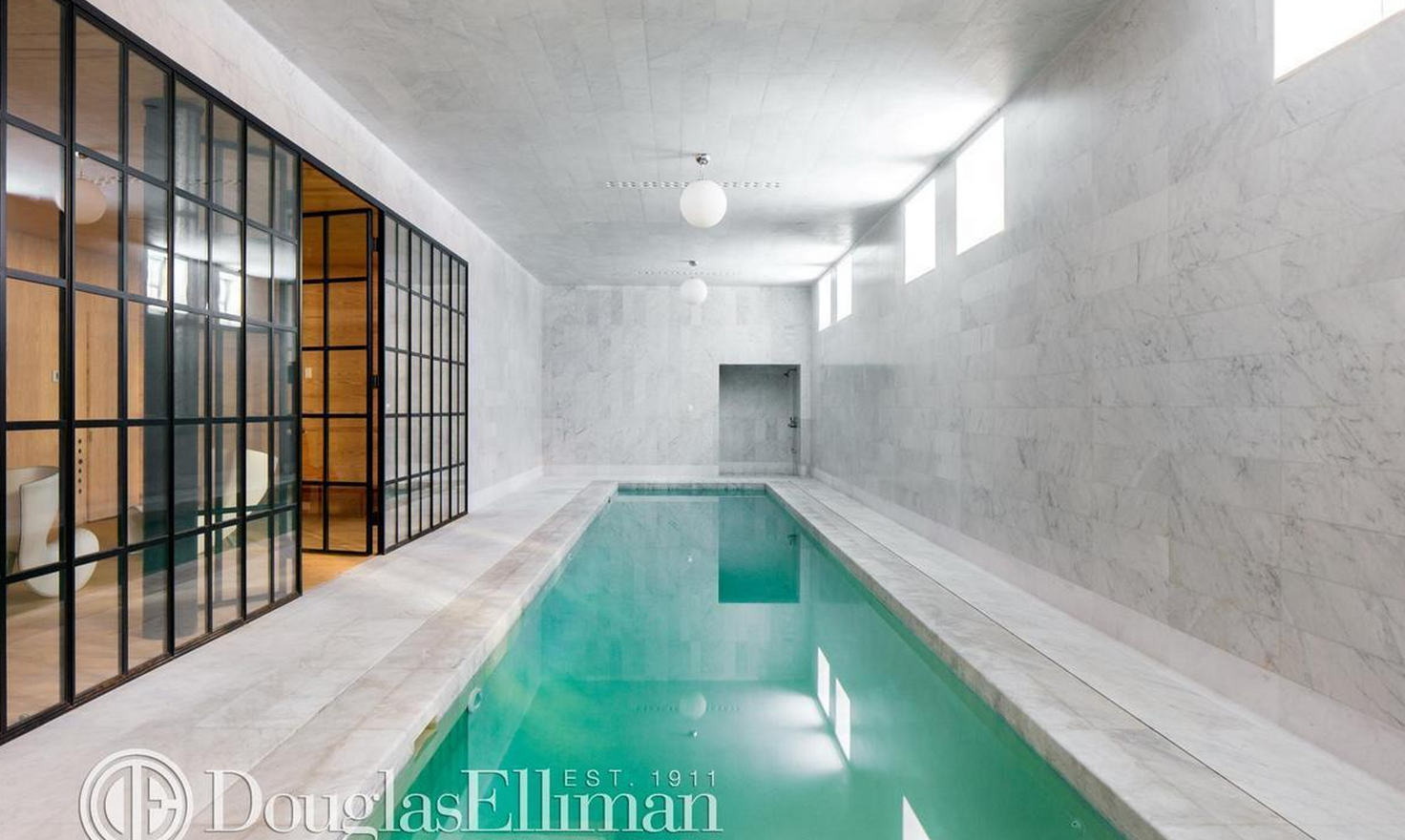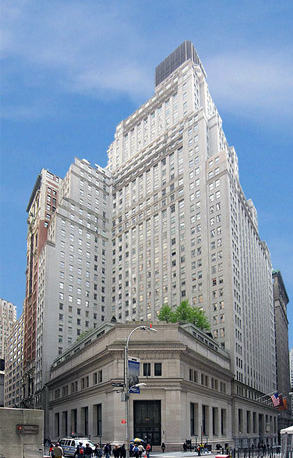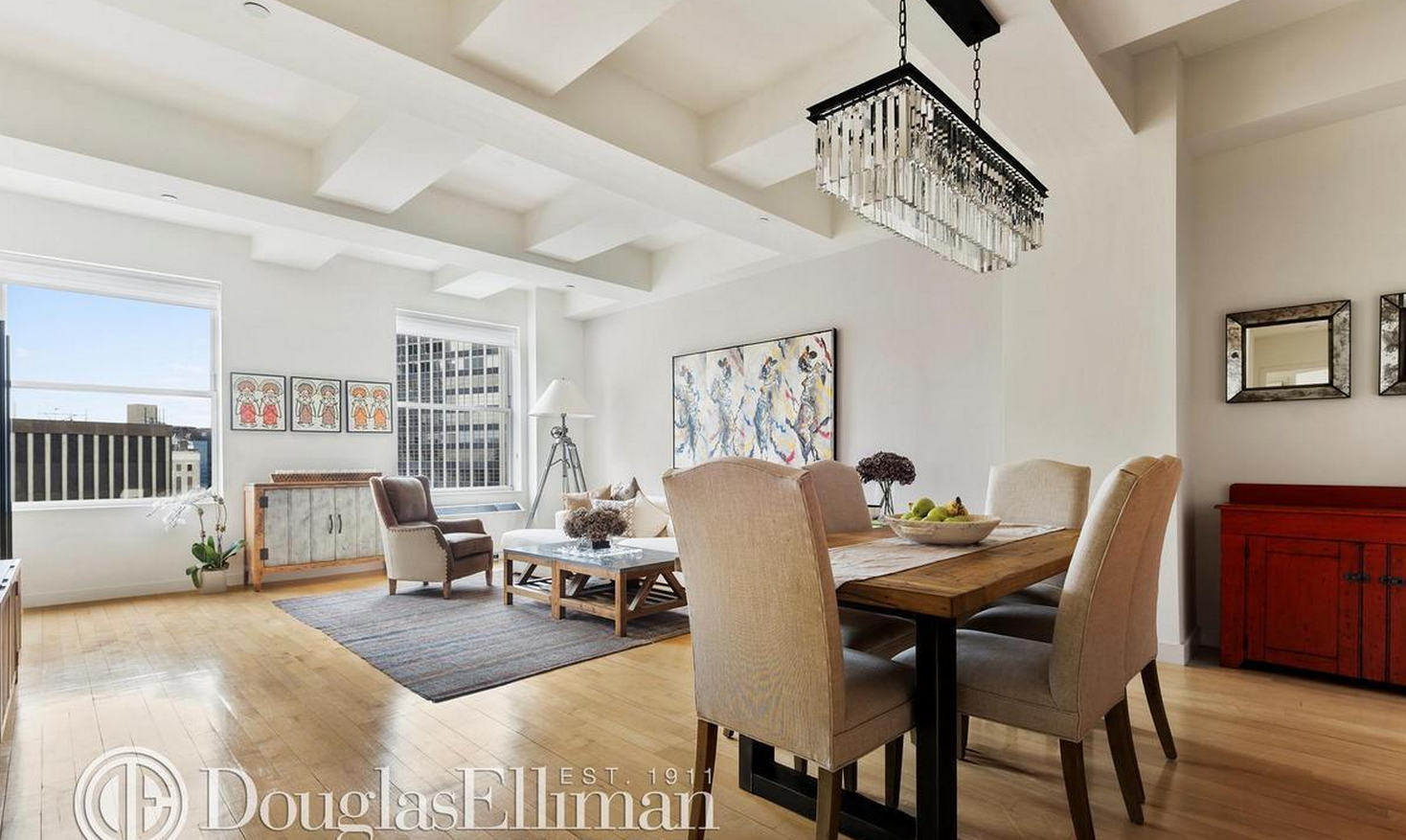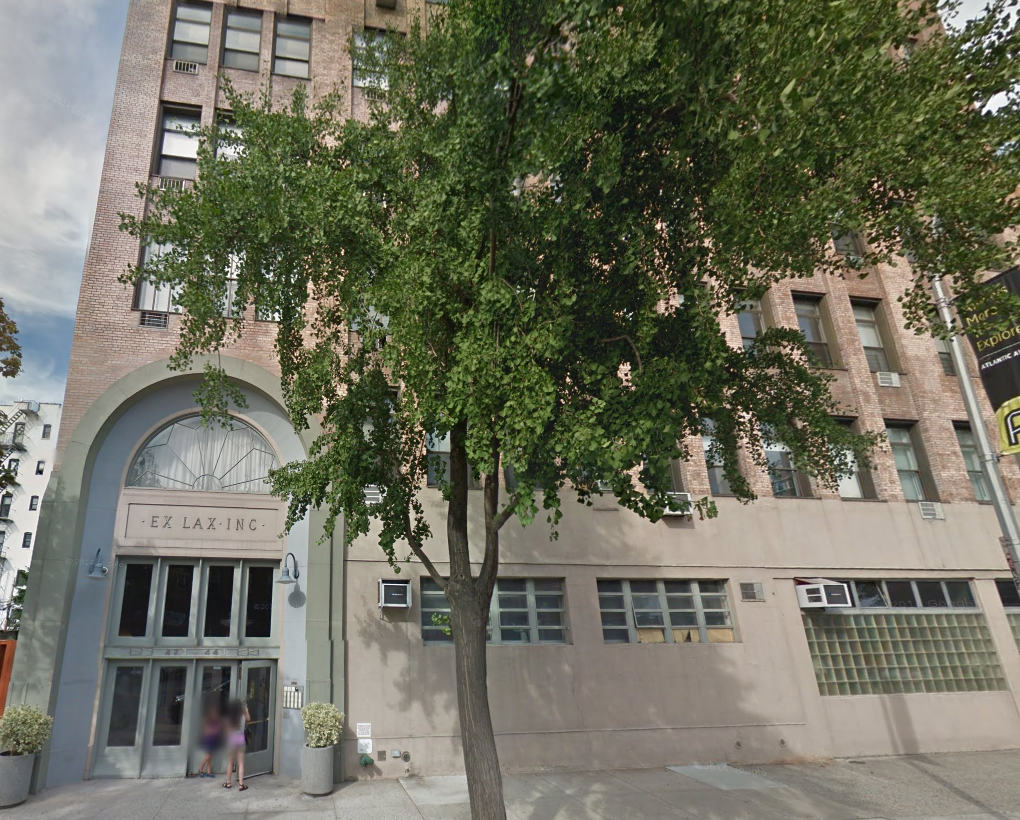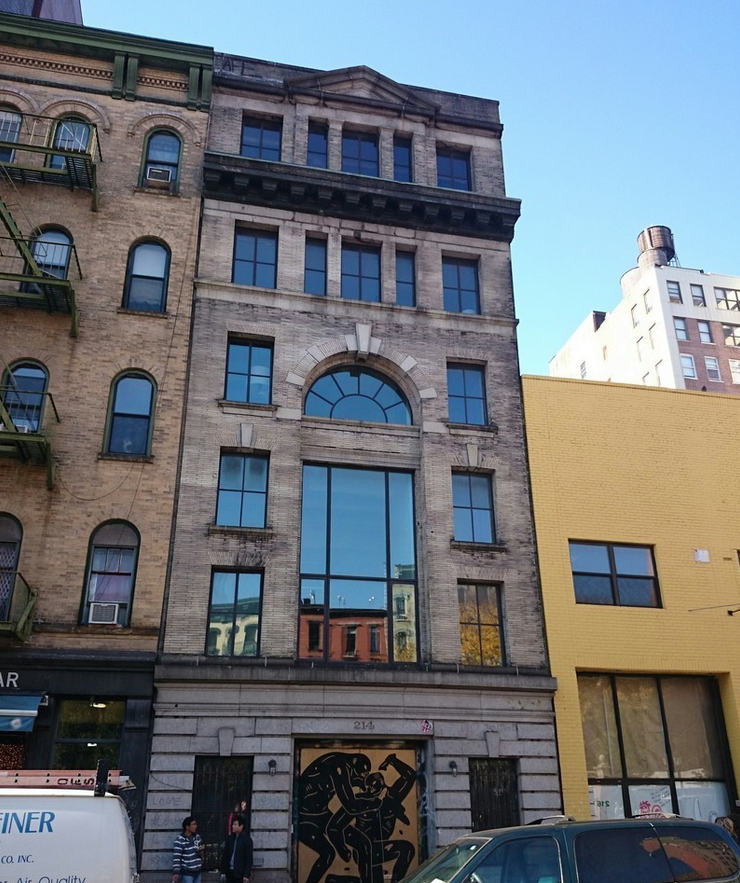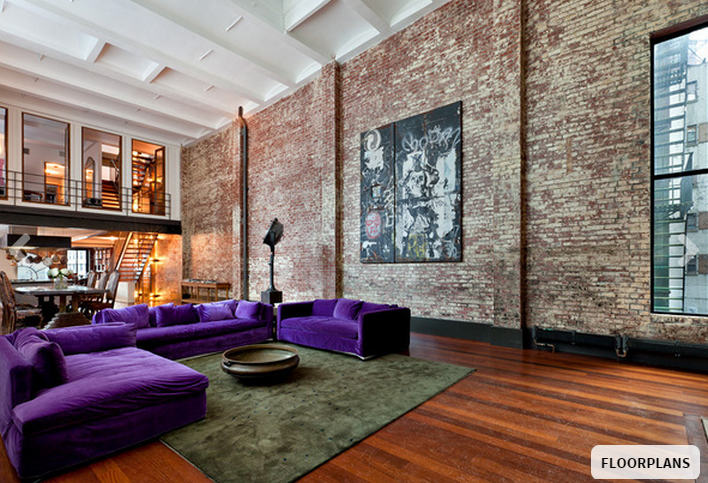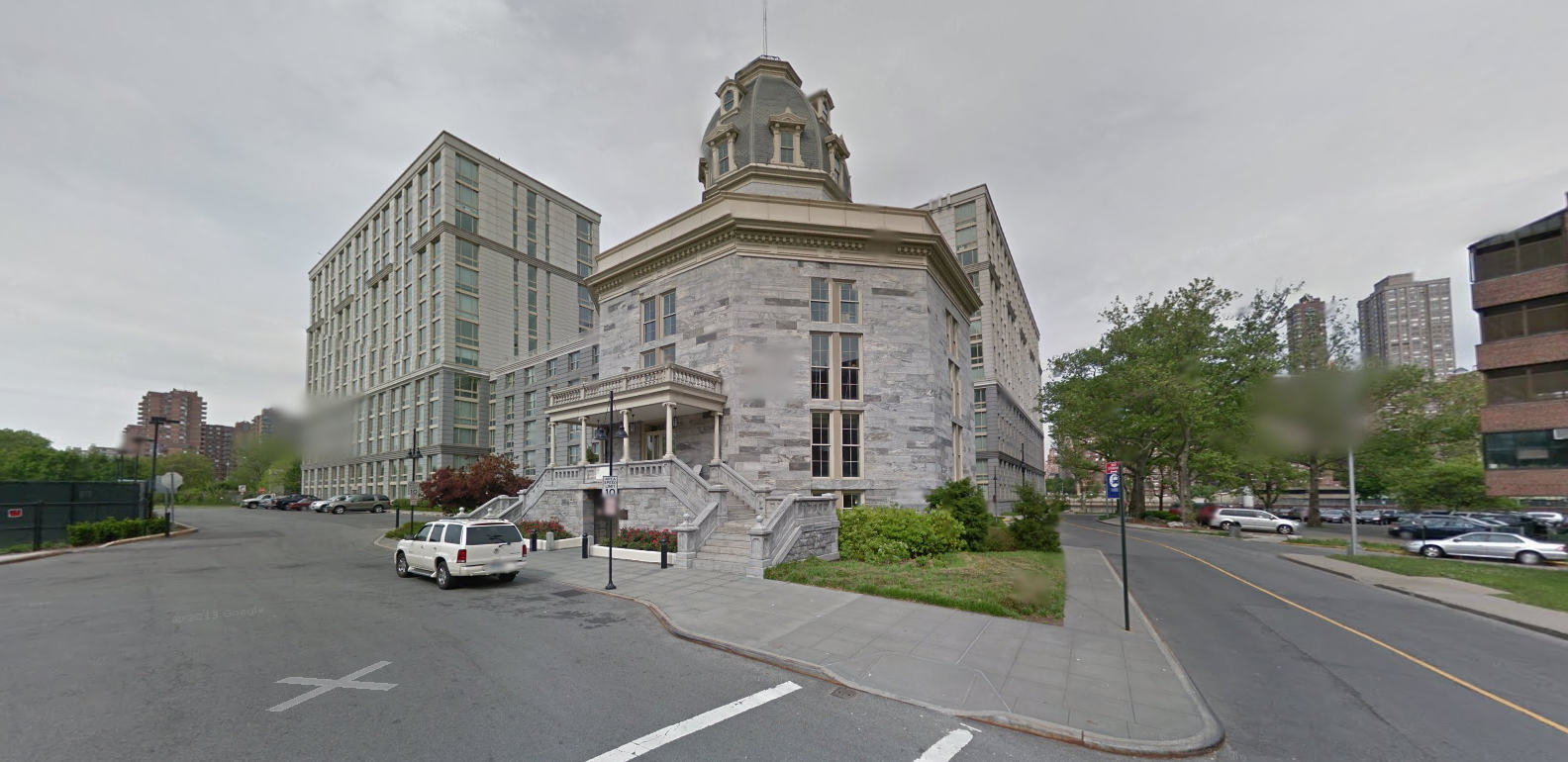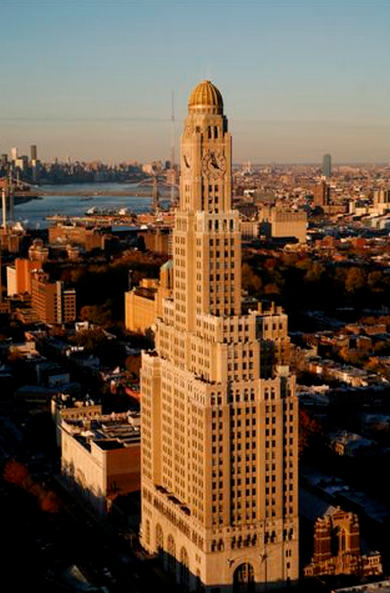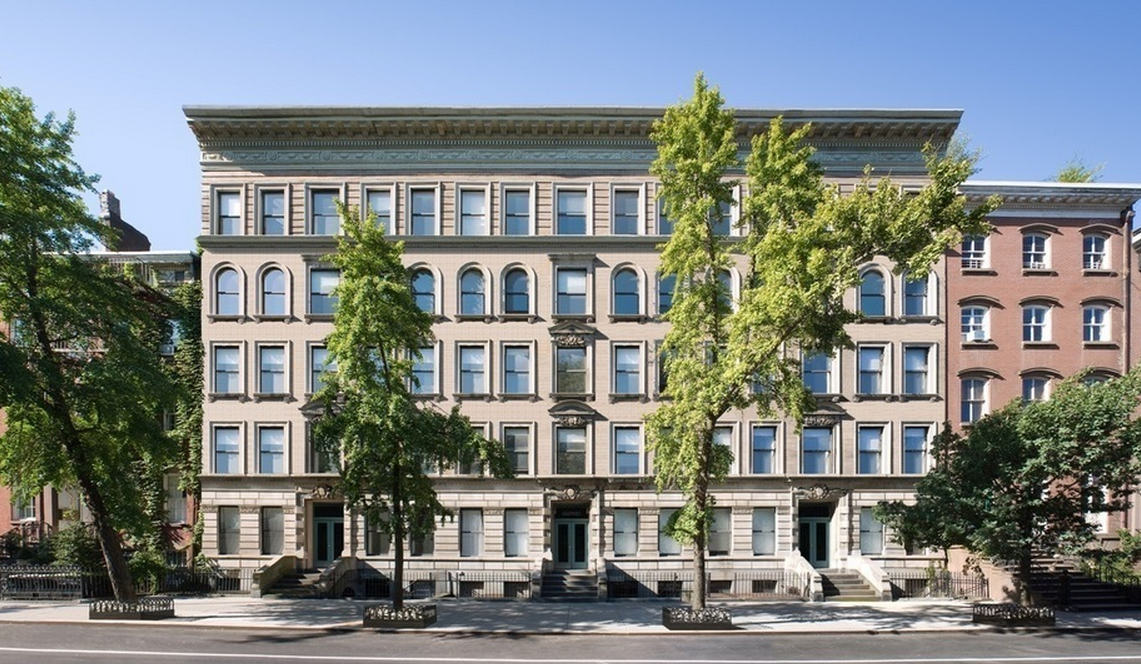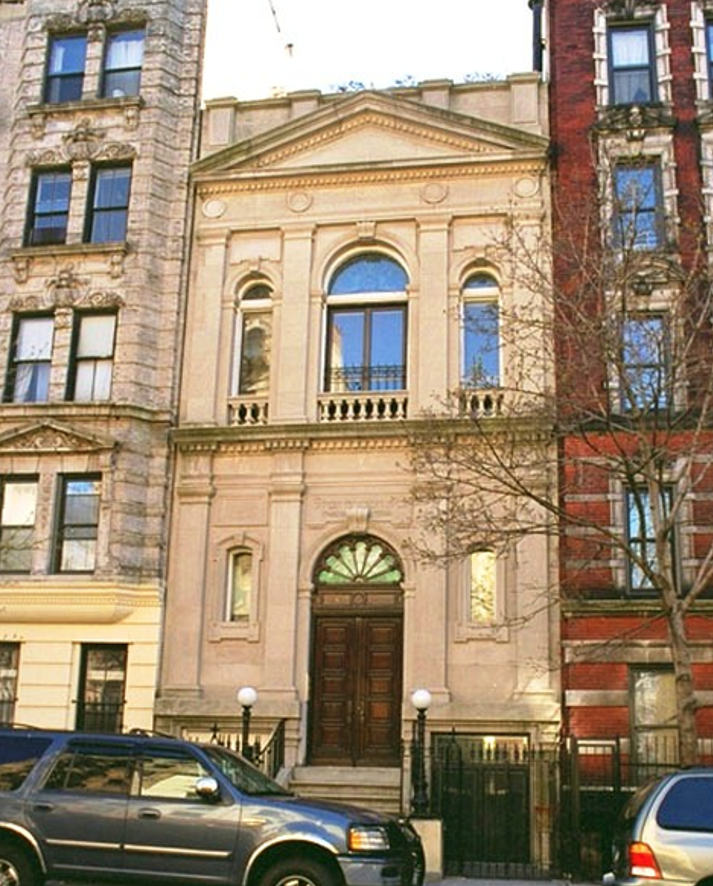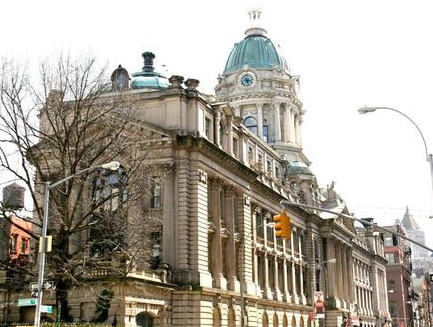One of the best things about living in NYC is that you think you’re an expert on the place until you scratch the surface and realize how little you know about your favorite buildings and blocks. There’s always something new to discover since the city is constantly changing and old lives get uncovered.
In tribute to all that’s changed over the years and all that’s left to be discovered, StreetEasy looked at the former lives of some of the most iconic and most overlooked residential buildings in the city. See 10 buildings that have been converted to residential spaces.
1. One Brooklyn Bridge Park (aka Jehovah’s Witnesses Shipping Warehouse)
Although Brooklyn Heights is best known as an upscale neighborhood full of Saabs and strollers, it’s also headquarters of the Jehovah’s Witnesses Church, which has hundreds of millions invested in real estate holdings in the area.
In 2003, the group began cashing in and sold off its printing facilities (where “The Watchtower” was printed) and its shipping warehouse. Twelve years later, the warehouse, located at the foot of Atlantic Avenue, has been converted into One Brooklyn Bridge Park, a luxury condo building best known for its incredible views of the Manhattan harbor and its premier location at the foot of Brooklyn Bridge Park.
The building is currently listing 17 active sales and seven active rentals, but its signature unit is this duplex penthouse on the 12th floor, asking a mere $32M (below):
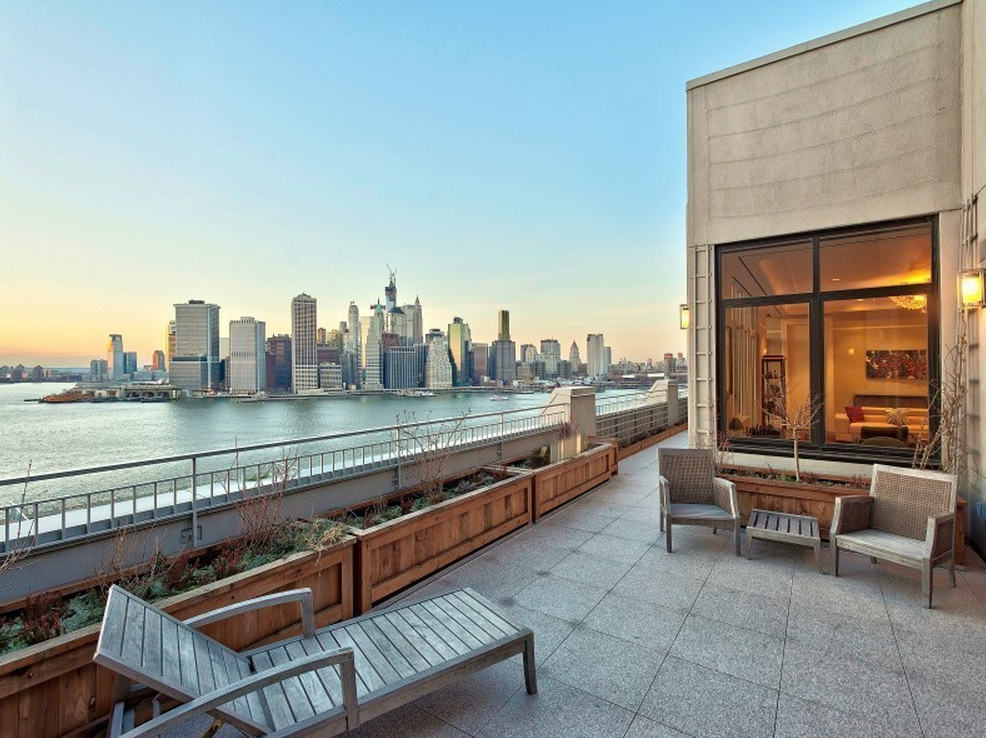
One Brooklyn Bridge Park penthouse — yours for $32M
2. 60 Collister Street (aka American Express Carriage House)
Gone are the horses and carriages from Tribeca’s 60 Collister Street, a boutique condo in Tribeca that once was no more than a lowly horse stable. Well, perhaps not so lowly seeing as the stables were owned by the burgeoning express mail delivery company American Express. Yes — that AmEx, whose previous life was delivering mail by horse-drawn carriages before it became a credit card company.
According to Forgotten New York, AmEx moved out in 1913 and in moved the American Railway Express Company and then First Machinery Corporation. In 2004, developer Peter Moore recognized the brilliance of the building and surrounding cobblestone streets and converted 60 Collister into 15 apartments.
See this incredible $65,000 triplex rental at 60 Collister and its 40-foot marble-clad, indoor pool (below):
3. 15 Broad Street (aka JP Morgan Bank HQ)
In the Financial District, on the corner of Wall and Broad is an L-shaped building deeply steeped in banking and financial history. Built in 1928 for the Equitable Trust Company, 15 Broad Street was later joined to the shorter, more interesting building tucked just in front – 23 Wall Street, which was the headquarters of J.P Morgan & Company.
Both buildings were sold in 2003 for $100 million to developers Africa Israel & Boymelgreen who hired French designer Philippe Starck to turn it into high-rise luxury condos dubbed “Downtown by Philippe Starck.” The fabulous, original 1,900-piece Louis Quinze chandelier that used to hang in the main hall of 23 Wall Street is displayed in the lobby of 15 Broad Street.
See a $1.875M condo scheduled for an open house this weekend (below):
4. 423 Atlantic Avenue (aka Ex-Lax Building)
Sometimes you’ve just got to take things at face value. Such is the case at 423 Atlantic Avenue, a 58-unit co-op emblazoned with the words “Ex Lax Inc” above its main entryway. Yep, there is no getting around it. This place was once the headquarters and factory of the Ex-Lax company.
In 1926, the widely successful company built the factory and headquarters that remains today on Atlantic Avenue between Hoyt and Nevins Streets. The company changed hands many times, lastly in 1981 to Sandoz Pharmaceuticals. The building was then converted to co-ops, becoming Brooklyn’s first factory conversion and offering buyers, impervious to the building’s past, some amazing open-floor plan lofts. According to the building page description on StreetEasy, “The building embraces its past with Ex-Lax advertising memorabilia on display in the vestibule and nods to its industrial past throughout the common areas.”
But the tributes in the vestibule are not the only vestiges of the building’s former life. Head up to loft 5E (photo below) and you’ll find a large bedroom/artist’s studio annexed from the rest of the apartment that opens onto the building’s roof. This glass and block roof structure onced housed the monkeys that were used for product testing back in the Ex-Lax’s pre-PETA days.
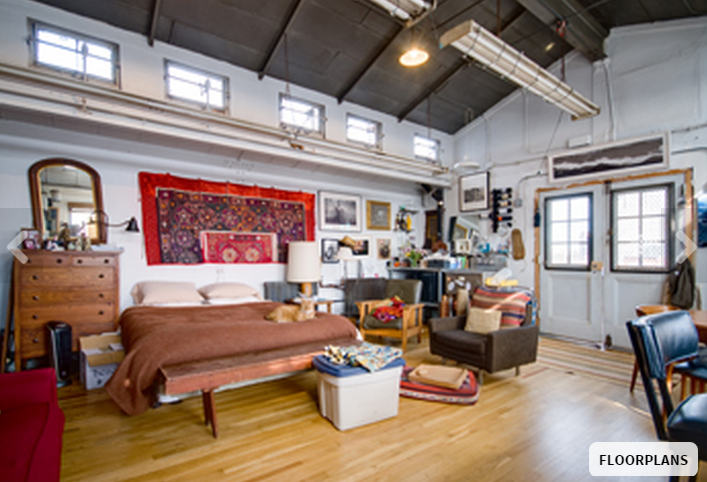
Studio on top of Ex-Lax building where monkeys were housed for animal testing.
5. 214 Lafayette Street (aka ‘Con Ed Substation’)
When Con Edison installed substations throughout NYC in the late 1800s and early 1900s, they were located in buildings designed to blend into the neighborhood. A perfect example is SoHo’s 214 Lafayette, a Greek Revival design, which housed gigantic machinery and converters.
By 1975, the building was converted into warehouse space, then an artist’s gallery. Architect Peter Guzy transformed the space into a single-family townhouse, featuring an indoor 40-foot pool with a viewing porthole at the entrance foyer.
Beyonce filmed the music video “Halo” here and John Mayer used the pool for scenes in his music video “Who Says.”
Look at incredible photos of the townhouse (below):
6. The Octagon (aka New York City Lunatic Asylum)
Designated a NYC landmark, Roosevelt Island’s Octagon Tower, located at 888 Main Street, once had a previous life as the administrative center and entrance to an insane asylum. With hospitals overcrowded, the city in 1828 bought what was then Blackwell’s Island to serve as a location for buildings to house inmates and the mentally ill. The Octagon was completed in 1839 and two wings emanating from it were built later.
Built from gray gneiss reportedly extracted from the area, The Octagon is now used as administrative and community space for the apartment complex, which offers 500 rental units.
7. One Hanson Place (aka Williamsburgh Savings Bank)
Veteran New Yorkers still refer to the 179-unit luxury condo now known as One Hanson Place as the Williamsburg Bank Building.
Built in 1927 by the architectural firm Halsey, McCormack and Helmer, the building originally served as the headquarters for the Williamsburgh Bank and was the borough’s tallest building for years. In later years, it became a beloved landmark, known for its four-sided gilded clock tower and iconic, and often inaccurate, red hands.
Ask any teenager in Brooklyn and it is undoubtedly where they got their braces tightened and cavities filled as the building was filled with many dentists and orthodontists.
In 2007, however, it was converted to condos ranging in size from studios to full-floor penthouses. Without a doubt the coolest units in this building are above the 23rd floor in what is known as the tower residences. Though those units have been sold, there are still three active listings and three pending contracts such as the $1.675M two-bedroom featured below.
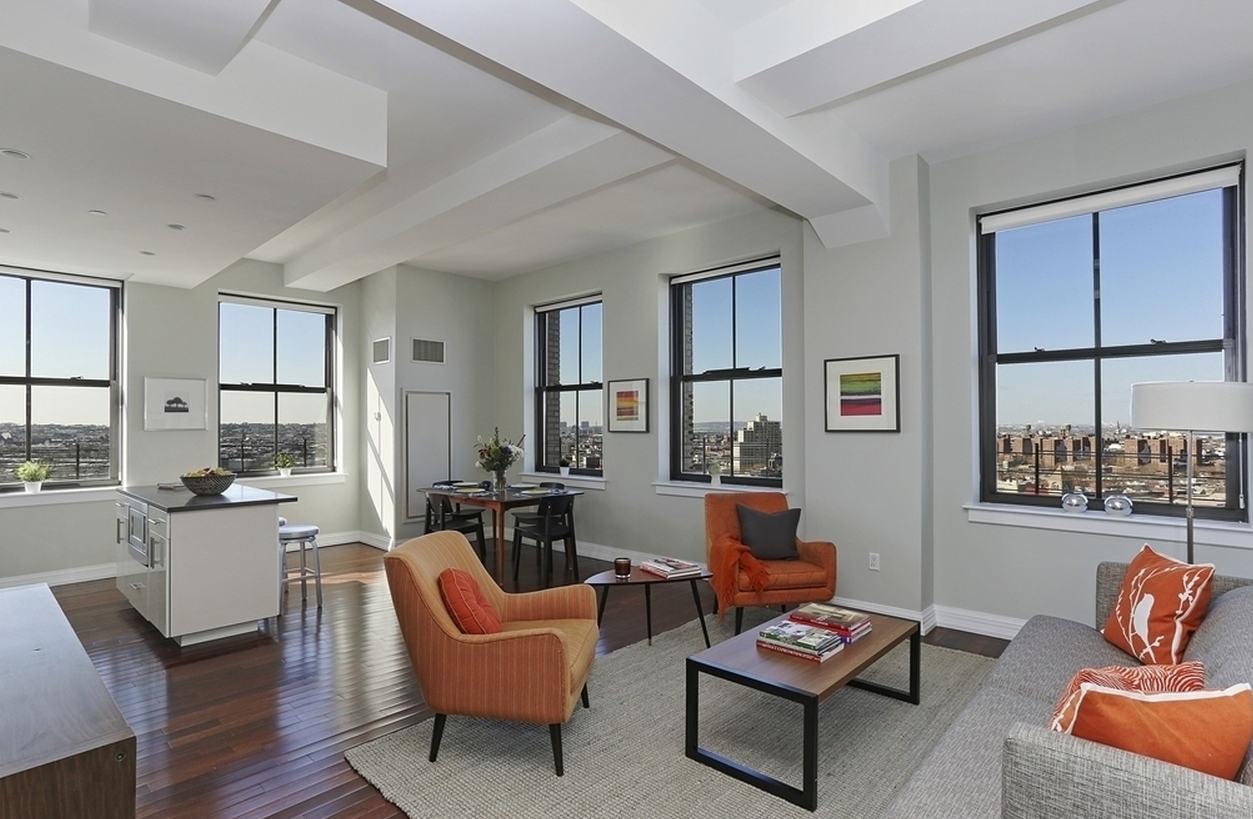
1 Hanson Place – $1.675M
8. 422 West 20th Street (aka General Theological Seminary dormitory)
In order to accommodate the increasing housing needs for its married students, the General Theological Seminary purchased 422 West 20th Street in 1957 and made it into a dormitory. But, due to the seminary’s increasing financial needs, this building and others were sold to the Brodsky Organization in 2011.
Brodsky, knowing condos are highly desired and hard to come by in Chelsea, converted this building into 36 condos, which were 75 percent sold on the first week of availability.
Residents of 422W20 have access to the seminary’s private garden, The Close. See a newly listed condo for $3.45M.
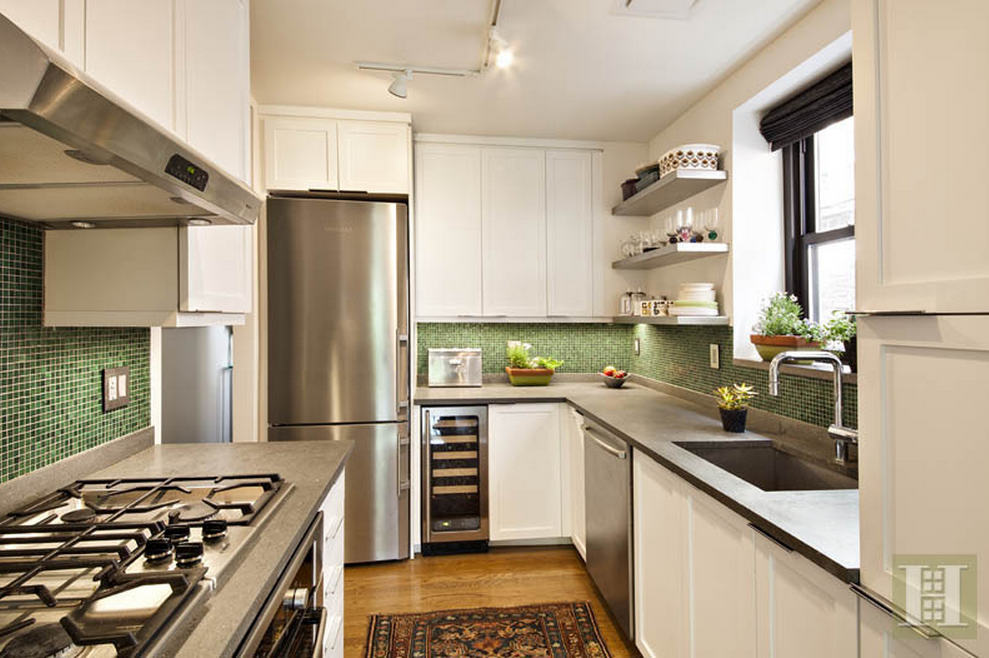
Condo at 422W20 on market for $3.45M.
9. 242 East 7th Street (aka Beth Hamedrash Hagodol Anshe Ungarn Synagogue)
It’s no great revelation that the East Village and Lower East Side were home to thousands of East European immigrants at the turn of the century. In 1908, the Jewish congregation of Hamedrash Hagodal Anse Ungam commissioned architects Gross and Klienberger, who had designed many tenement buildings in the area, to build a new synagogue on the site of a three-story brick home that had previously served as their place of worship. The resulting synagogue they built combines Beaux Arts and Neo-classical design elements including three arching window bays separated by pilasters and topped with a pediment.
Despite the ebbs and flows in the Jewish and East European population in the area, the congregation remained strong through much of the 20th century. In 1975, however, the synagogue disbanded and the building was abandoned. Nine years later, a developer bought the building and converted into five residences. Although the façade remains true to the original design and the building is unmistakably a synagogue, the interiors have all been entirely gut-renovated and given a distinct modern feel.
Take for example the 1,600 square-foot triplex penthouse featured below.
10. 240 Centre Street (aka The Police Building)
That funny, sometimes terrible, sometimes thrilling and always trafficked area of Downtown Manhattan known as the Civic Center has some of the city’s best and worst architecture. Beautiful Beaux-Arts facades abut soul-suckingly drab office buildings on nearly every block.
Head a bit north on Centre Street to the equally incongruous intersection of Chinatown, SoHo and Little Italy, and you’ll find the same true of the buildings there. There is no better example of the juxtaposition of the highs and lows of NYC architecture than 240 Centre Street, an expansive Beaux-Arts building sandwiched on a sliver of concrete on one of the city’s most congested blocks.
Formerly the headquarters of the NYPD, the building was constructed in 1905 amidst a warren of Little Italy’s tenement-lined streets. Despite its workaday surroundings, the headquarters, built by the architecture firm Hoppin and Koen, was an impressive, gilded and marble-clad structure. It housed a gym and firing range in the basement; an observation deck on the top floor and an elaborate wedding cake style dome – the interiors of which served as the police commissioner’s private offices.
The police headquarters remained on site at 240 Centre Street until 1973 when it moved to One Police Plaza. In 1983, a group of developers bought the building from the city and after $20M in renovations, converted it to 55-unit luxury condominium. The building is listed on the National Register of Historic Places, but you can own your very own piece of it for a few million. Currently listed for $3.65M, the two-bedroom has some incredible design touches including arched window bays and domed 18 foot ceilings that give a sense of what it must have been like for the police commissioner to have that private office back in the day.
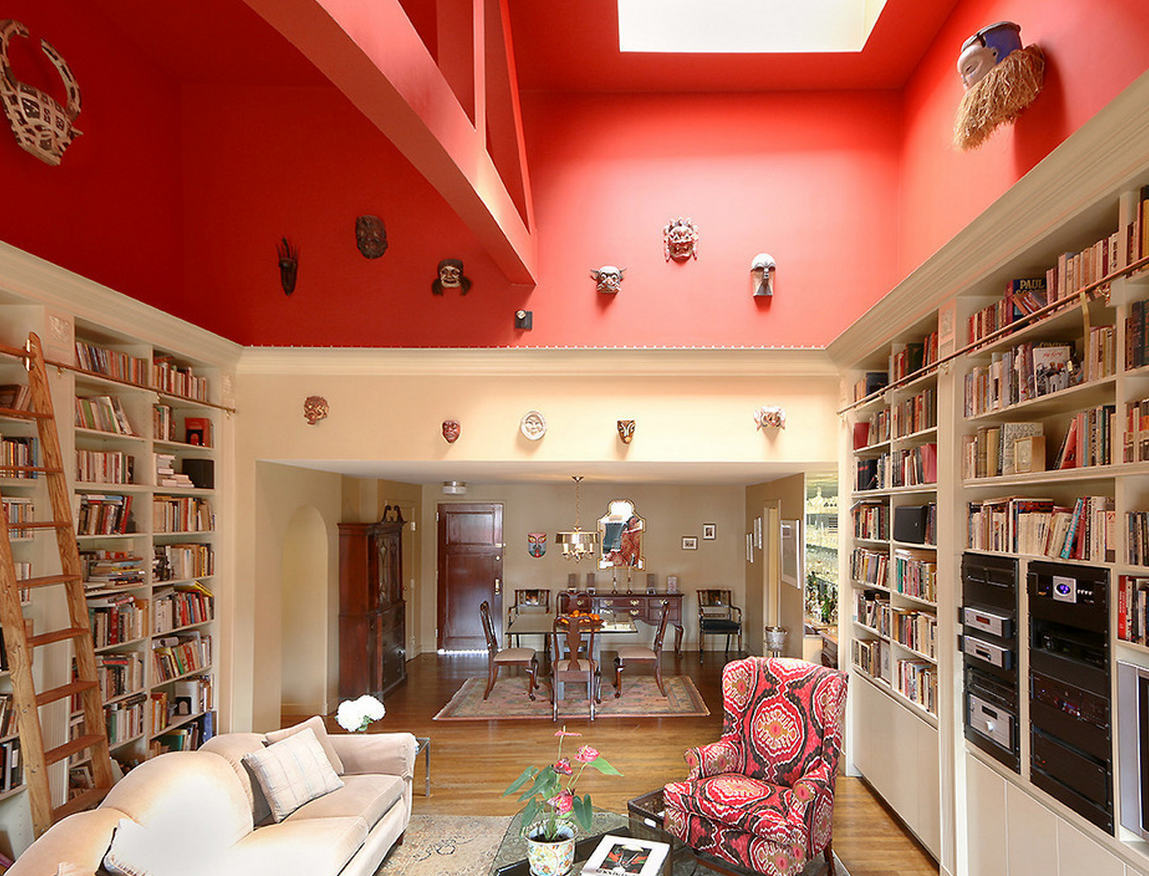
Police Building condop listed for $3.65M.

